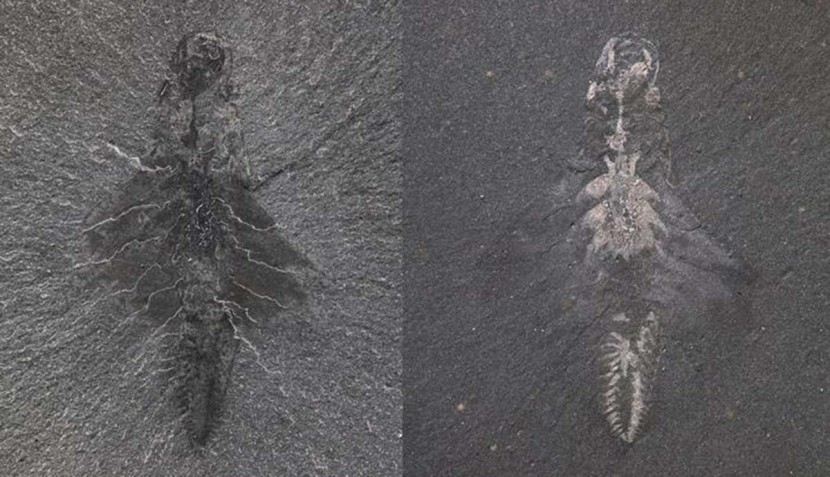
A newly described fossil species from the Cambrian period is reshaping scientists' understanding of early animal life. Mosura fentoni, which lived around 506 million years ago, was recently analyzed in detail in a study published in the journal Royal Society Open Science. The fossil was uncovered from Canada's Burgess Shale, a renowned site known for preserving soft-bodied organisms in remarkable detail.
What makes Mosura particularly intriguing is its alien-like anatomy: it had three eyes, clawed limbs, and a long, segmented tail lined with gills. These features suggest adaptations that challenge prior assumptions about Cambrian predators and how they survived.
Mosura fentoni is part of a group called radiodonts, an extinct lineage of early arthropods that includes the well-known Anomalocaris. While Anomalocaris was a large, fearsome predator, Mosura was only about the size of a human finger. Despite its small size, it was no less unusual. It had paddle-like limbs to help it swim and a specialized feeding disk, similar to its larger cousins. Most notably, it had a 16-segment tail, each segment bearing gills. This structure likely wasn't used for movement but may have played a key role in respiration, possibly allowing Mosura to thrive in low-oxygen environments.
"As much as we learn about radiodonts, there always seems to be something new and surprising about this group around the corner," said study lead author Joe Moysiuk, curator at the Manitoba Museum, in an email to Gizmodo.
"The 'abdomen' in Mosura is different in that its segments are small and they have only tiny flaps that would have been basically useless for propulsion." The unusual form of the creature earned it the nickname "sea moth," a nod to the Japanese kaiju Mothra, based on its otherworldly appearance rather than any relation to moths.
The study of Mosura offers rare insights into the internal anatomy of Cambrian organisms. From 61 fossil specimens, researchers were able to identify preserved eye structures, nerve tissues, and even a digestive tract. Some fossils also showed reflective patches that researchers interpret as components of an open circulatory system—a heart that pumped blood into open body cavities. This level of preservation is extraordinary and reveals a complexity in early animals that is rarely seen in the fossil record.
The fossils were gathered over the past 50 years, mainly by the Royal Ontario Museum, from the Burgess Shale region in Yoho and Kootenay National Parks. Once an ancient seabed, the area preserved creatures like Mosura in fine detail. The discovery adds to the growing list of unusual species that emerged during the Cambrian Explosion, a critical period of rapid evolutionary change.
"So many science fiction creatures have been inspired by living organisms," Moysiuk said. "It seems only natural that scientists should take some inspiration in return."
© 2025 HNGN, All rights reserved. Do not reproduce without permission.








